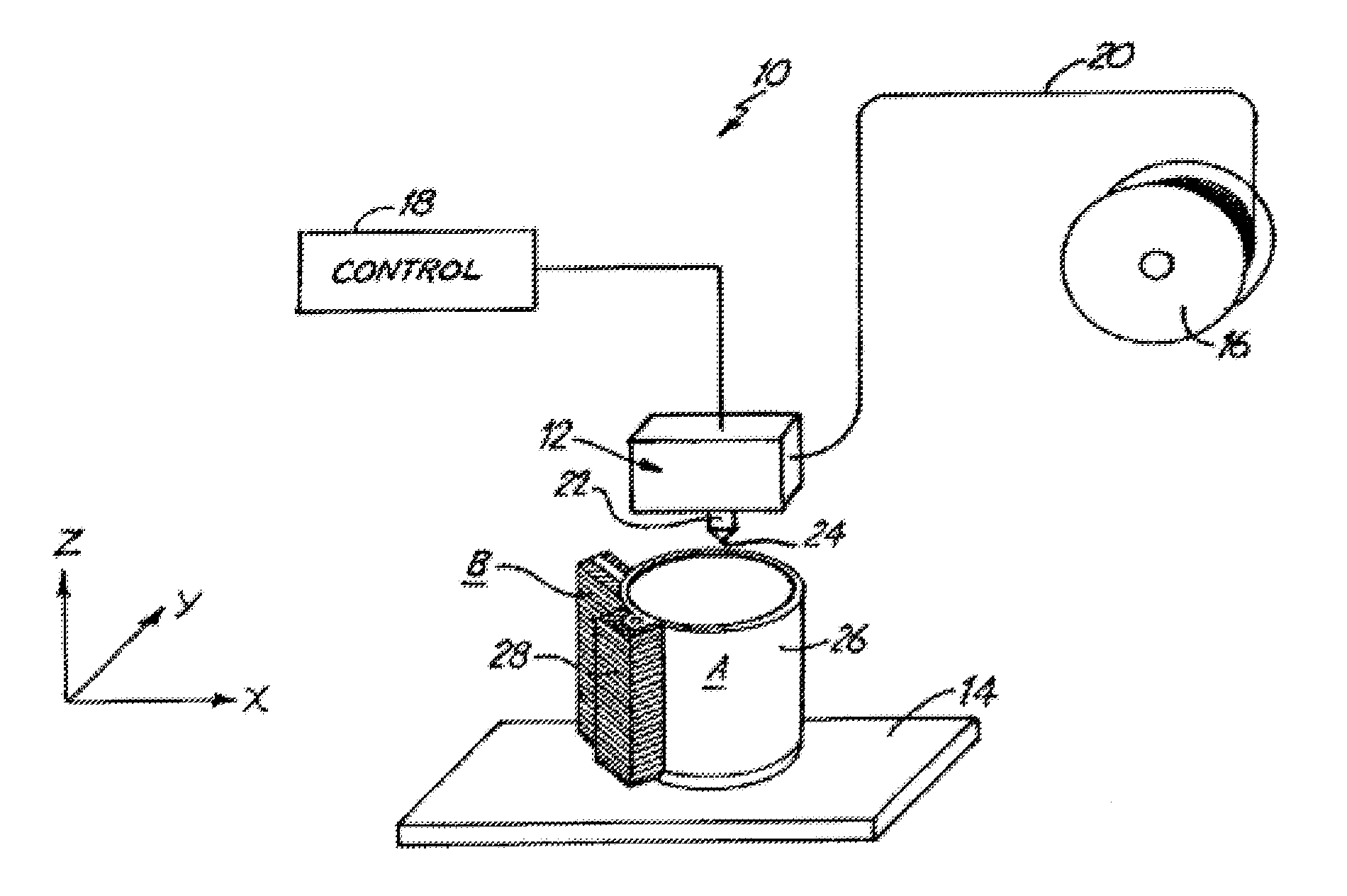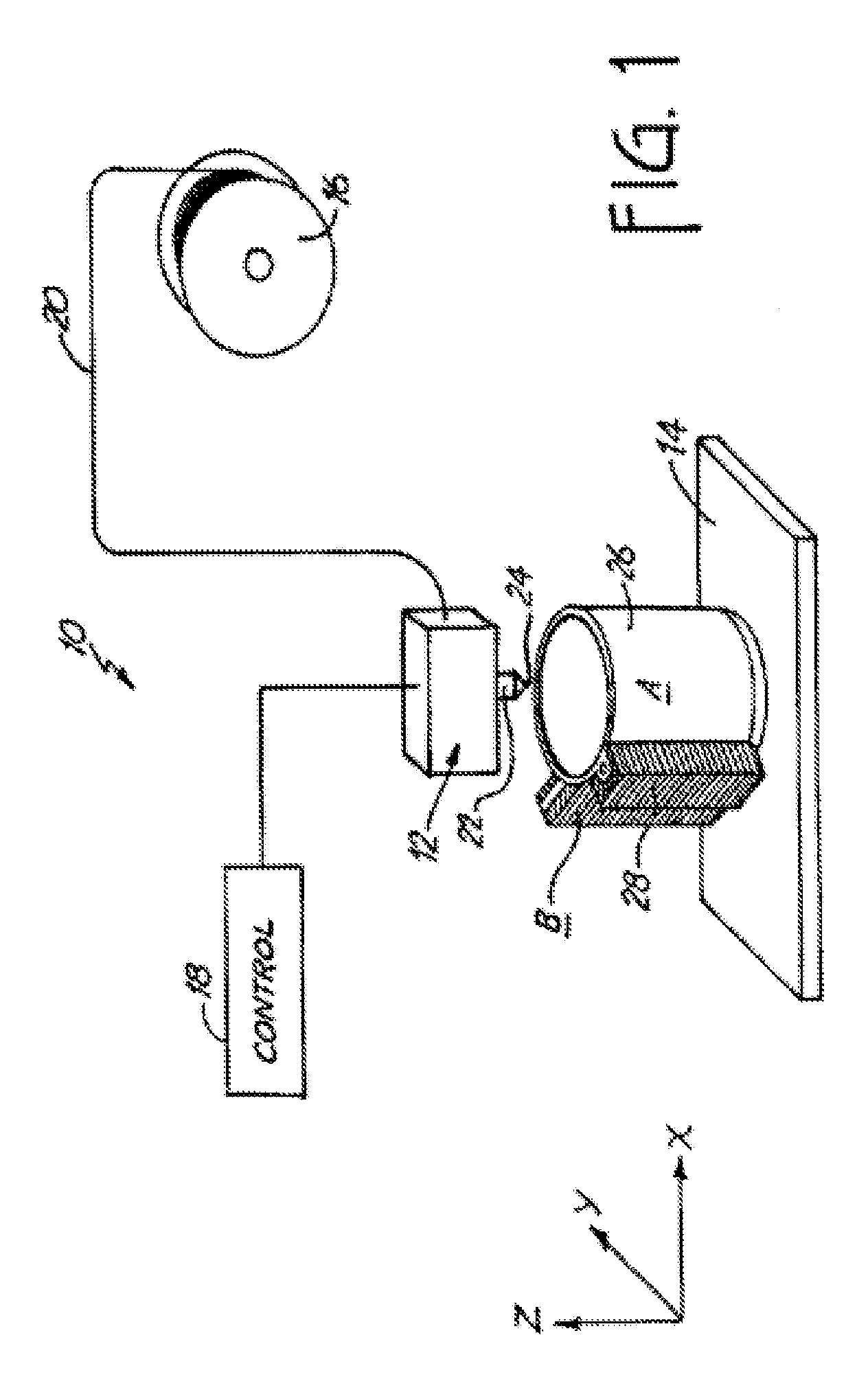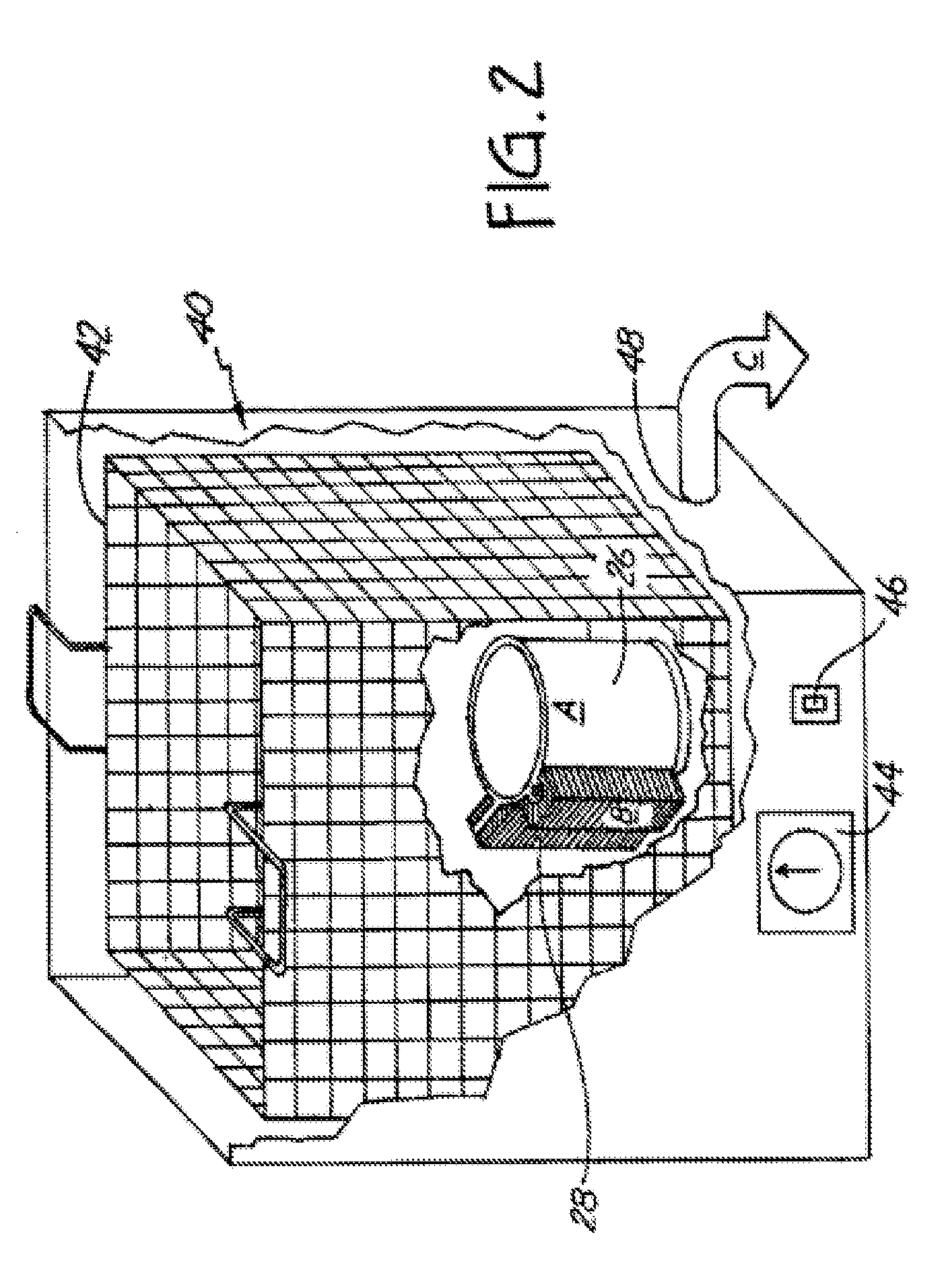Use and provision of an amorphous vinyl alcohol polymer for forming a structure
a technology of amorphous vinyl alcohol polymer and amorphous alcohol, which is applied in the direction of additive manufacturing processes, manufacturing tools, instruments, etc., can solve the problems of material deformation, failure of the machine, and inability to use,
- Summary
- Abstract
- Description
- Claims
- Application Information
AI Technical Summary
Benefits of technology
Problems solved by technology
Method used
Image
Examples
Embodiment Construction
[0020]Referring now to FIG. 1 an extrusion apparatus 10 is shown for building a model 26 supported by a support structure 28 according to the present invention. The extrusion apparatus 10 includes an extrusion head 12, a material-receiving base 14, a filament supply spool 16 and a control 18. Extrusion head 12 moves in X and Y directions with respect to base 14, which moves in a vertical or Z direction. Supply spool 16 supplies a flexible filament 20 to extrusion head 12. Filament 20 typically follows a rather tortuous path through extrusion apparatus 10, and is advanced towards extrusion head 12 by means of stepper motor-driven pinch rollers. Filament 20 is melted in a liquifier 22, carried by extrusion head 12. The liquifier 22 heats the filament to a temperature slightly above its solidification point, reducing it to a molten state. Molten material is extruded through an orifice 24 of liquifier 22 onto base 14.
[0021]The extrusion apparatus 10 of the disclosed embodiment has no po...
PUM
| Property | Measurement | Unit |
|---|---|---|
| Fraction | aaaaa | aaaaa |
| Particle size | aaaaa | aaaaa |
| Particle size | aaaaa | aaaaa |
Abstract
Description
Claims
Application Information
 Login to View More
Login to View More - R&D
- Intellectual Property
- Life Sciences
- Materials
- Tech Scout
- Unparalleled Data Quality
- Higher Quality Content
- 60% Fewer Hallucinations
Browse by: Latest US Patents, China's latest patents, Technical Efficacy Thesaurus, Application Domain, Technology Topic, Popular Technical Reports.
© 2025 PatSnap. All rights reserved.Legal|Privacy policy|Modern Slavery Act Transparency Statement|Sitemap|About US| Contact US: help@patsnap.com



